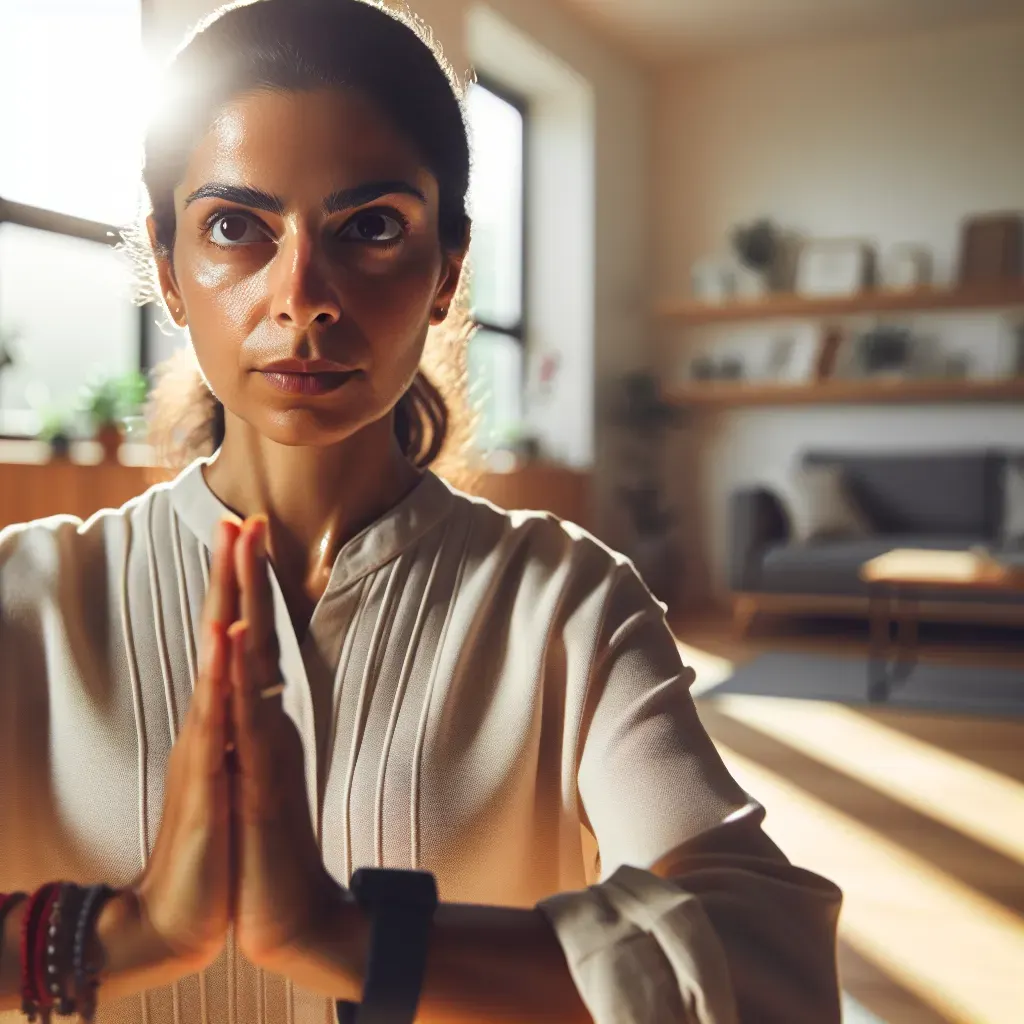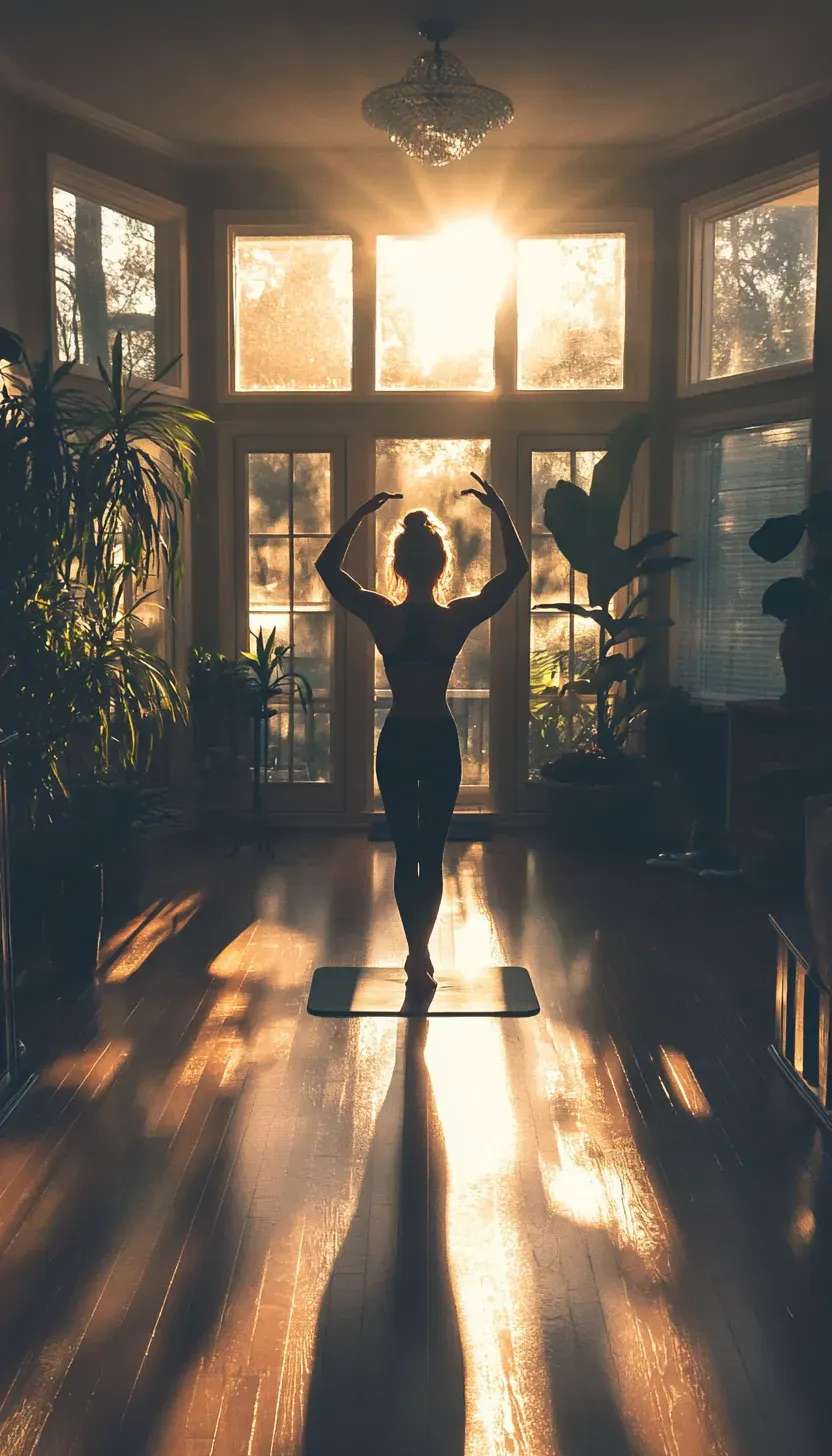Navigating Modifications: Adapting Vinyasa Flow Yoga Poses for Beginners
Table of Contents
• Introduction to Vinyasa Flow Yoga
• Understanding the Basics of Vinyasa
• Importance of Modifications for Beginners
• Common Vinyasa Poses and Their Variations
• How to Use Props Effectively
• Listening to Your Body's Signals
• Building Strength and Flexibility Gradually
• Tips for a Safe Practice Environment
• Embracing Your Yoga Journey
Introduction to Vinyasa Flow Yoga
Vinyasa Flow Yoga is a dynamic and fluid practice that seamlessly connects breath with movement, creating a rhythm that can be both invigorating and meditative.
Unlike more static forms of yoga, Vinyasa encourages practitioners to flow through a series of poses, transitioning gracefully from one to another.
This continuous movement not only enhances physical strength and flexibility but also fosters a deeper awareness of the body’s capabilities and limitations.
As beginners embark on this journey, they may discover that Vinyasa is not just about mastering postures; it’s about cultivating a mindful presence and embracing the journey of self-discovery.
What sets Vinyasa apart is its adaptability, making it an ideal choice for those new to yoga.
Each pose can be modified to suit individual needs, allowing practitioners to listen to their bodies and honor their unique experiences.
Whether it’s adjusting the height of a lunge or finding a comfortable version of downward dog, these modifications empower beginners to explore their practice without the fear of overexertion.
Ultimately, Vinyasa Flow Yoga invites everyone to find their rhythm, transforming challenges into opportunities for growth while fostering a profound connection between mind, body, and spirit.
Understanding the Basics of Vinyasa
Vinyasa, often referred to as "flow" yoga, is characterized by its dynamic movement and breath synchronization, creating a seamless transition between poses.
At its core, Vinyasa is about cultivating awareness of the body and breath, allowing practitioners to find their rhythm and establish a deeper connection with their practice.
Unlike more static forms of yoga, Vinyasa encourages exploration and creativity, inviting beginners to experiment with their movements while still focusing on alignment and safety.
Understanding the fundamentals of Vinyasa can empower newcomers to adapt their practice effectively.
Each pose serves as a building block, where modifications can be incorporated to accommodate varying levels of flexibility and strength.
For instance, if the downward-facing dog feels too intense, bending the knees or using props can maintain the integrity of the pose without sacrificing the flow.
This adaptability not only fosters confidence but also highlights the importance of listening to one's body, encouraging beginners to embrace their unique journey rather than striving for perfection.
Importance of Modifications for Beginners
Modifications are not just a safety net for beginners; they are essential tools for building a sustainable yoga practice.
For those new to Vinyasa Flow, the temptation to push into challenging poses can lead to frustration or even injury.
By embracing modifications, practitioners can cultivate a deeper awareness of their bodies, learning to listen to what feels right rather than adhering strictly to an idealized form.
This process fosters a nurturing environment where growth is gradual and enjoyable rather than rushed.
Moreover, modifications allow for a personalized experience in a group class setting, where every body is unique.
By adjusting poses to fit individual needs, whether it’s using blocks for support in downward dog or dropping to the knees during chaturanga, beginners can fully engage with each movement without fear of falling short.
This adaptability not only enhances physical alignment but also encourages mental resilience, empowering individuals to explore their limits safely.
As beginners become comfortable with these adjustments, they build confidence, enabling them to challenge themselves gradually as their practice evolves.
Common Vinyasa Poses and Their Variations
In Vinyasa flow yoga, the beauty of each pose lies not just in its execution but also in the myriad of variations available to accommodate different body types and skill levels.
Take the Downward-Facing Dog, for instance; while it may seem straightforward, beginners might find relief in bending their knees or raising their heels.
These modifications not only alleviate strain but also foster a deeper connection with the breath, allowing practitioners to fully experience the pose without the pressure of achieving a perfect form.
Another common pose, the Warrior II, can be intimidating for newcomers due to its demands on balance and strength.
However, using a wall for support or widening the stance can empower beginners to explore this foundational position with confidence.
Additionally, incorporating props like blocks can enhance stability and alignment, providing a sense of grounding as one transitions through the flow.
By embracing these variations, practitioners can cultivate both physical resilience and mindfulness, transforming their practice into a personalized journey of self-discovery.
How to Use Props Effectively
Props are invaluable tools in Vinyasa Flow yoga, offering support and enhancing the practice for beginners.
When using props, it's essential to shift your mindset from viewing them as crutches to seeing them as extensions of your body and mind. For instance, a yoga block can bring the floor closer to you in poses like Triangle or Half Moon, allowing for a safer alignment and deeper exploration without compromising your form.
By elevating your hand or foot, you create a foundation that fosters stability, enabling you to focus on breath and movement rather than straining for reach.
Incorporating props like straps can also transform your experience in poses such as Downward Dog or Shoulder Bridge. They serve as a bridge between your current flexibility and your desired range of motion, empowering you to gradually deepen your practice.
Experimenting with props encourages creativity; perhaps you use a blanket for added cushioning in seated poses or a bolster to support your back in restorative postures.
By embracing these tools, you cultivate a more personalized practice that respects your unique body dynamics, ultimately paving the way for growth and confidence on the mat.
Listening to Your Body's Signals
Listening to your body’s signals is an essential part of any yoga practice, especially in Vinyasa Flow, where the pace can be exhilarating yet demanding.
Each pose serves as a conversation between you and your body, revealing areas of tension, flexibility, and strength.
Instead of pushing through discomfort, take a moment to pause and tune in; this awareness allows you to adapt poses to suit your unique needs.
For instance, if a forward fold feels too intense, consider bending your knees or elevating your hands on blocks. This not only prevents strain but also deepens your connection to the practice.
Moreover, understanding your body's signals can lead to profound insights about your overall well-being. Perhaps tightness in your hips reflects emotional stress or lingering fatigue from a busy week.
By honoring these sensations rather than dismissing them, you cultivate a deeper sense of self-awareness that transcends the mat. Remember, yoga is not about achieving the perfect pose; it’s about creating a mindful dialogue with yourself.
Embrace the journey of adaptation, and let each breath guide you toward a more compassionate and intuitive practice.
Building Strength and Flexibility Gradually
Building strength and flexibility is essential for a sustainable yoga practice, especially for beginners navigating Vinyasa Flow.
It’s easy to feel overwhelmed by the fluid transitions and intricate poses, but embracing a step-by-step approach allows the body to adapt naturally.
Start by focusing on foundational postures, such as Downward Dog or Warrior I, which not only build strength but also promote awareness of alignment and breath.
These foundational poses serve as building blocks, ensuring that as you progress, your body is equipped to handle more complex movements without strain.
Incorporating gentle modifications can further enhance this gradual development. For instance, using props like blocks or straps can provide support and deepen stretches, allowing for a more profound exploration of flexibility without pushing beyond your limits.
Additionally, listening to your body and recognizing its unique rhythm is crucial; what might be a challenging pose for one person could be entirely different for another.
By cultivating patience and consistency in your practice, you foster resilience in both body and mind, ultimately transforming your yoga journey into a celebration of personal growth rather than a race to reach advanced poses.
Tips for a Safe Practice Environment
Creating a safe practice environment is essential for beginners as they explore the dynamic world of Vinyasa Flow Yoga.
Start by ensuring that the space is free from distractions and clutter, allowing practitioners to focus fully on their breath and movements. Incorporate soft lighting or natural sunlight to create an inviting atmosphere; this can enhance relaxation and mindfulness.
Additionally, consider the temperature of the room; maintaining a comfortable climate helps prevent discomfort during practice, enabling students to engage deeply without the distraction of sweat or chill.
Safety also extends to the use of props, which can significantly aid beginners in achieving proper alignment. Encourage the use of blocks, straps, or bolsters to support poses, making them more accessible and reducing the risk of injury.
Remind students to listen to their bodies and honor their limits; emphasizing this principle fosters a culture of self-awareness and respect for personal boundaries.
Finally, promote open communication, creating an environment where questions are welcomed and can empower beginners to express any concerns and seek guidance, ultimately enhancing their yoga journey.
Embracing Your Yoga Journey
Embracing your yoga journey is about more than mastering poses; it’s about cultivating a deeper connection with yourself.
Each time you step onto the mat, you're invited to explore not just the physical aspects of your practice but also the emotional and mental layers that unfold.
As a beginner, this exploration can feel daunting, but remember that every small adjustment you make, whether it's modifying a pose or adjusting your breath, reflects significant growth. Celebrate these moments as milestones rather than obstacles.
As you navigate the world of Vinyasa Flow, allow yourself the freedom to experiment. Discover what feels right in your body today, knowing that it may change tomorrow.
Perhaps you find that a gentle modification brings you closer to a pose you once thought unattainable. This adaptability fosters resilience, reminding you that yoga is not a destination but a dynamic journey.
By embracing each twist and turn, you cultivate a mindset of curiosity and compassion, essential for both your practice and life beyond the mat.
Also, check out our post, Building Strength & Flexibility: A Progressive Approach to Advancing Your Vinyasa Flow Practice
People Also Asked
Q1: What are vinyasa modifications?
A1: Adjustments made to poses for easier, safer yoga practice.
Q2: How do I start modifying vinyasa poses as a beginner?
A2: Begin with slight tweaks using props or alternate alignments.
Q3: Why are modifications important in yoga?
A3: They protect against injury and help build strength gradually.
Q4: What common modifications work for the Downward-Facing Dog?
A4: Bending the knees or raising the heels can ease strain.
Q5: Can modifications help improve flexibility?
A5: Yes, adapting poses lets you gradually increase your range of motion.
Q6: How do props enhance vinyasa modifications?
A6: Props like blocks and straps assist in proper alignment and support.
Q7: What safety tips should beginners follow?
A7: Listen to your body, use props, and avoid forcing a pose.
Q8: Are modifications permanent fixes or stepping stones?
A8: They are transitional adjustments that help you progress safely.
Q9: How can a modified Warrior II benefit me?
A9: Using a wall or wider stance offers stability and builds confidence.
Q10: Where can I learn more about adaptive yoga practices?
A10: Look for beginner classes or online videos focused on modifications.





